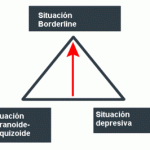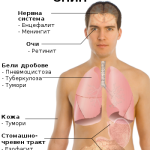Mental health articles
OF mental health care and mentally ill
Organic Illness and Misdiagnosis of Conversion Disorder
Organic Illness and Misdiagnosis of Conversion Disorder
Because of the implications for both treatment and prognosis, a discussion of organic illness and misdiagnosis of conversion disorder before the review of treatments and prognosis for conversion disorder is appropriate. The diagnosis of conversion disorder is not as simple as might be expected. There are two salient aspects to the relationship between organic illness and conversion symptoms that are vitally important in understanding the complexities of clinical diagnosis in conversion disorder.
First, there are a substantial number of patients whose initial diagnosis of conversion symptoms is changed to organic illness. Second, there is a high incidence of patients with conversion reactions and concomitant organic illness. Clinicians who ignore these two basic tenets will experience many problems in understanding and managing this group of patients. Conversion reactions can occur in isolation, as part of another psychiatric disorder, or as part of a neurological disorder. The following studies strongly challenge the diagnostic utility of conversion hysteria. In a seminal piece of research, Slater and Glithero performed a 7- to 10-year follow-up of ninety-nine patients discharged from the NationalHospital in London. Four patients who had committed suicide and eight patients who died from an organic illness were not included at follow-up. Of the seventy-three patients contacted at follow-up, 30% of the cases initially diagnosed with conversion symptoms had organic illnesses that accounted for the presenting problem. Of the thirty-two patients who did not have organic illnesses, only thirteen patients could be truly said to have been without pathology, whereas the rest suffered from schizophrenia, depression, and severe disability. Because an organic illness may appear asymptomatic or atypical at one phase of an illness, clinicians may be predisposed to misdiagnose bona fide medical disorders as ‘‘conversions’’. Moreover, an organic illness may produce behavioral disturbances (e.g., emotional lability, attention seeking, constant need for reassurance, and aggressiveness) that mimic psychiatric presentations. Gatfield and Guze performed a 2.5- to 10-year follow-up of twenty-four patients who were discharged from neurological and neurosurgical wards with a diagnosis of conversion reaction. Five of twenty-five patients had neurological disease. Raskin et al. examined fifty patients referred from an inpatient and outpatient neurological service of two teaching hospitals; followup periods ranged from 6 to 12 months. Organic illness was found in seven patients. Whitlock noted that almost 64% of his sample showed evidence of an accompanying or preceding organic brain disorder, compared to 5% for a control group of persons diagnosed with depression and/ or anxiety. Merskey and Buhrich observed a prevalence of 50% for organic cerebral disorders in conversion patients (N = 89). In a 10-year follow-up of forty male patients with conversion, a 25% false positive rate was obtained. Watson and Buranen reported that symptoms most characteristic of the false positives were degenerative diseases and structural damage that affected the spinal cord, peripheral nerves, bones, muscles, and connective tissue. Roy found that 40% of his sample had organic brain disease, whereas Folks et al. noted a 17.7% rate of organicity in their sample of patients with conversion disorder. In another study, a remarkable 80% of thirty patients originally diagnosed with conversion hysteria had, it was eventually found, diagnosable medical disorders as an underlying cause. Couprie et al. reviewed medical records of patients admitted with conversion disorders other than pseudoseizures over a seven-year span. A total of fifty-six patients were identified and interviewed in person (N = 22) or by phone (N = 34). The median interval from the onset of symptom to interview was 4.5 years. Contrary to findings from earlier studies, Couprie and colleagues found that only two of the fifty-six patients later developed neurological conditions. These data are consistent with other data presented by Kent et al. in which only four out of thirty-two conversion disorder cases followed 4 years later had organic conditions. The smaller number of cases of conversion disorder eventually diagnosed as organic conditions in more recent studies might suggest better psychiatric and medical assessments. As it is currently conceptualized, conversion disorder will likely become more of a rarity in the clinical setting. Clearly, many patients are diagnosed with conversion disorder who then develop significantly more serious medical or neurological disorders. Although no one has calculated the cost of the misdiagnosis of medical conditions, it is obvious that, if the error in diagnosis results in the deaths of patients (as some of the above studies suggest), then the price is extremely high. Consequently, it may be wise that the diagnosis of conversion disorder not be seen as an either-or decision between organic versus psychological symptomatology. However, if the diagnosis of conversion disorder is given, the clinician is well advised to carefully monitor ongoing symptomatology to ensure detection of an organic process.
Post Footer automatically generated by wp-posturl plugin for wordpress.
More from my site
Tags: conversion, disorder, Illness, misdiagnosis









Leave a Reply